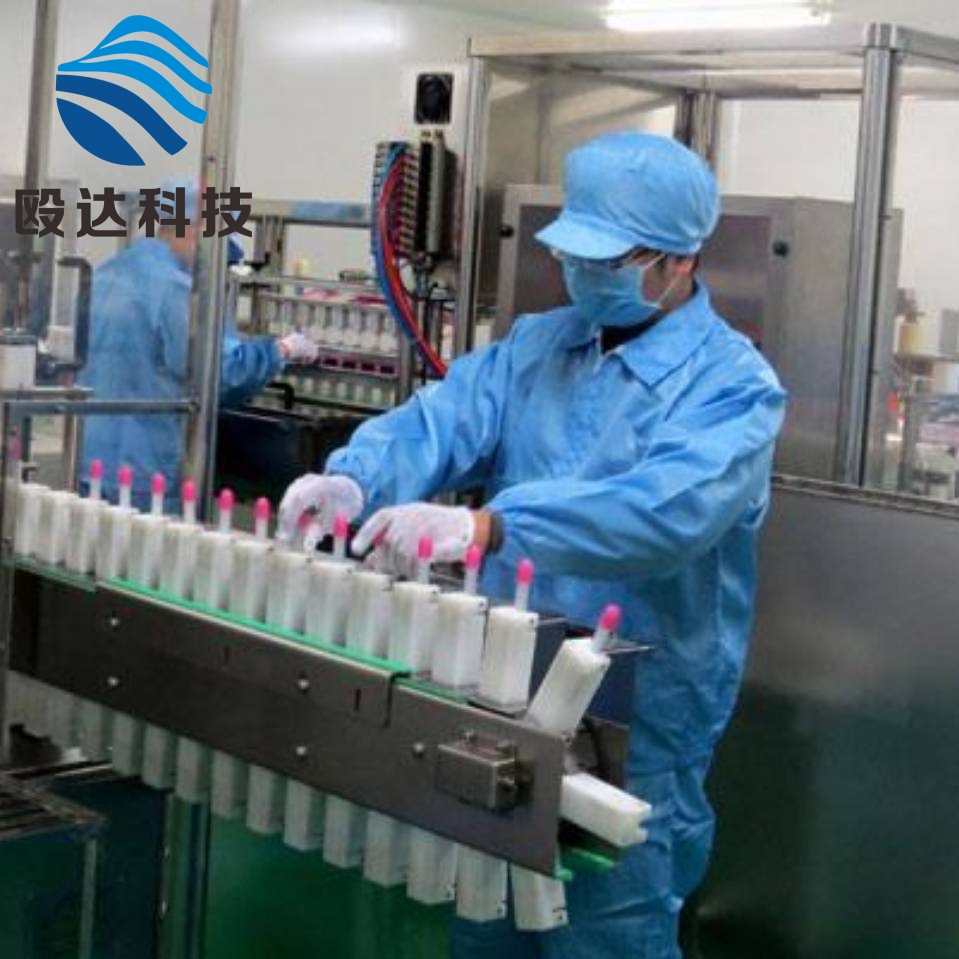-
Categories
-
Pharmaceutical Intermediates
-
Active Pharmaceutical Ingredients
-
Food Additives
- Industrial Coatings
- Agrochemicals
- Dyes and Pigments
- Surfactant
- Flavors and Fragrances
- Chemical Reagents
- Catalyst and Auxiliary
- Natural Products
- Inorganic Chemistry
-
Organic Chemistry
-
Biochemical Engineering
- Analytical Chemistry
- Cosmetic Ingredient
-
Pharmaceutical Intermediates
Promotion
ECHEMI Mall
Wholesale
Weekly Price
Exhibition
News
-
Trade Service
Yimaitong compiles and organizes, please do not reprint without authorization.
Soft tissue infection is still a common clinical problem, which can lead to prolonged hospital stays, disability and death.
For more serious infections, active surgical treatment combined with antibiotic treatment is required.
In February 2021, the Society of Infectious Surgery (SIS) updated and issued a guideline for the management of complex skin and soft tissue infections, which is an update of the 2009 version of the guideline.
Regarding the treatment of non-necrotizing cellulitis, the guidelines mainly consist of the following recommendations.
Antibacterial treatment considerations ➤For non-suppurative infections, antibacterial treatment against β-hemolytic streptococcus is recommended.
[1C] ➤For mild infections, oral preparations (such as penicillin V potassium, cephalexin, dicloxacillin) are recommended.
[1A] ➤For moderate to severe infections that require hospitalization, narrow-spectrum β-lactam drugs (such as penicillin, cefazolin, and ceftriaxone sodium) are recommended for intravenous administration.
[1C] ➤For patients who have severe allergic reactions to β-lactam drugs and require intravenous medication, clindamycin is recommended.
[1C] ➤ In severe cases, consider using protein synthesis inhibitors alone or in combination with cell wall active drugs (clindamycin, linezolid).
[1C] ➤For high-risk patients (previously colonized or infected patients, septic shock patients) or patients who are resistant to first-line therapy lacking MRSA activity, MRSA should be covered empirically.
[1C]➤Based on current research, it is recommended to use cephalexin alone to treat simple cellulitis.
[2B]➤There is insufficient evidence to support oral or intravenous antimicrobial treatment for more than 5 days.
[1C]➤Long-term antimicrobial therapy may be beneficial for some patients who are at higher risk of cellulitis recurrence after initial treatment.
[2A] Diagnosis of complex infection ➤ Bedside ultrasound in the emergency room can accurately distinguish cellulitis and abscess.
[2B]➤Fever is uncommon in patients with skin and soft tissue infections (SSTI) and cannot be used alone for the diagnosis of SSTI.
[2C]➤It is recommended to perform rapid molecular analysis and testing after incision and drainage, which can promote targeted antimicrobial therapy.
[1A] Treatment of complex infections ➤For patients with simple abscesses with normal immune function, non-invasive surface packing incision and drainage treatment should be considered.
[2C] ➤For simple SSTI, ultrasound-guided suction is not recommended as an alternative to incision and drainage.
[1B] ➤Based on the patient's condition and doctor's preference, it is recommended to perform one or two phase closure.
[1B] Antimicrobial treatment of complex infections ➤ Empirical coverage of methicillin-resistant Staphylococcus aureus (MRSA) should be considered, especially in patients with purulent infections.
[1B]➤Oral medication for suspected or confirmed MRSA infections.
Recommended medications include linezolid [1A], doxycycline or minocycline [1B], trimethoprim-sulfamethoxazole[ 1A].
➤Oral alternative drugs for additional coverage of MRSA can consider the application of tedizolamide [1A], drafloxacin [1A] and omacycline [1A].
➤For suspected or confirmed MRSA infections, the following intravenous medications are recommended: vancomycin [1A], linezolid [1A], daptomycin [1A], ceftaroline [1A], tilavancin [1A] ].
➤Intravenous medication for additional coverage of MRSA can consider dalbavancin [1A], oritavancin [1A], omacycline [1A], tedizolamide [1A], drafloxacin [1A] and tega Cyclin [2B].
➤In areas with low antibiotic resistance and where patients do not need to use broad-spectrum antibiotics immediately due to the severity of the disease or the risk of multi-microbial infections, for complex SSTIs, consider applying narrow-spectrum antibiotics that are not covered by gram-negative bacteria .
[2C] Adjuvant antibiotic treatment ➤ After incision and drainage of a simple abscess, it is recommended to use trimethoprim-sulfamethoxazole (TMP-SMZ) or clindamycin for adjuvant antibiotic therapy for 7-10 days.
[1A] ➤ Initial anti-MRSA therapy is very important to reduce recurrence.
Adjuvant TMP-SMZ or clindamycin.
TMP-SMZ is better tolerated but clindamycin has a lower recurrence rate.
[1C] ➤For patients with medically stable cellulitis, patients who do not respond to outpatient oral antimicrobial therapy can safely receive 3 days of outpatient intravenous infusion treatment, and then switch to 7 days of oral treatment.
[2B] Reference source: Therese M Duane, Jared M Huston.
et al.
Surgical Infection Society 2020 Updated Guidelines on the Management of Complicated Skin and Soft Tissue Infections.
Surg Infect (Larchmt).
2021 Feb 26.
doi: 10.
1089/sur.
2020.
436.
Soft tissue infection is still a common clinical problem, which can lead to prolonged hospital stays, disability and death.
For more serious infections, active surgical treatment combined with antibiotic treatment is required.
In February 2021, the Society of Infectious Surgery (SIS) updated and issued a guideline for the management of complex skin and soft tissue infections, which is an update of the 2009 version of the guideline.
Regarding the treatment of non-necrotizing cellulitis, the guidelines mainly consist of the following recommendations.
Antibacterial treatment considerations ➤For non-suppurative infections, antibacterial treatment against β-hemolytic streptococcus is recommended.
[1C] ➤For mild infections, oral preparations (such as penicillin V potassium, cephalexin, dicloxacillin) are recommended.
[1A] ➤For moderate to severe infections that require hospitalization, narrow-spectrum β-lactam drugs (such as penicillin, cefazolin, and ceftriaxone sodium) are recommended for intravenous administration.
[1C] ➤For patients who have severe allergic reactions to β-lactam drugs and require intravenous medication, clindamycin is recommended.
[1C] ➤ In severe cases, consider using protein synthesis inhibitors alone or in combination with cell wall active drugs (clindamycin, linezolid).
[1C] ➤For high-risk patients (previously colonized or infected patients, septic shock patients) or patients who are resistant to first-line therapy lacking MRSA activity, MRSA should be covered empirically.
[1C]➤Based on current research, it is recommended to use cephalexin alone to treat simple cellulitis.
[2B]➤There is insufficient evidence to support oral or intravenous antimicrobial treatment for more than 5 days.
[1C]➤Long-term antimicrobial therapy may be beneficial for some patients who are at higher risk of cellulitis recurrence after initial treatment.
[2A] Diagnosis of complex infection ➤ Bedside ultrasound in the emergency room can accurately distinguish cellulitis and abscess.
[2B]➤Fever is uncommon in patients with skin and soft tissue infections (SSTI) and cannot be used alone for the diagnosis of SSTI.
[2C]➤It is recommended to perform rapid molecular analysis and testing after incision and drainage, which can promote targeted antimicrobial therapy.
[1A] Treatment of complex infections ➤For patients with simple abscesses with normal immune function, non-invasive surface packing incision and drainage treatment should be considered.
[2C] ➤For simple SSTI, ultrasound-guided suction is not recommended as an alternative to incision and drainage.
[1B] ➤Based on the patient's condition and doctor's preference, it is recommended to perform one or two phase closure.
[1B] Antimicrobial treatment of complex infections ➤ Empirical coverage of methicillin-resistant Staphylococcus aureus (MRSA) should be considered, especially in patients with purulent infections.
[1B]➤Oral medication for suspected or confirmed MRSA infections.
Recommended medications include linezolid [1A], doxycycline or minocycline [1B], trimethoprim-sulfamethoxazole[ 1A].
➤Oral alternative drugs for additional coverage of MRSA can consider the application of tedizolamide [1A], drafloxacin [1A] and omacycline [1A].
➤For suspected or confirmed MRSA infections, the following intravenous medications are recommended: vancomycin [1A], linezolid [1A], daptomycin [1A], ceftaroline [1A], tilavancin [1A] ].
➤Intravenous medication for additional coverage of MRSA can consider dalbavancin [1A], oritavancin [1A], omacycline [1A], tedizolamide [1A], drafloxacin [1A] and tega Cyclin [2B].
➤In areas with low antibiotic resistance and where patients do not need to use broad-spectrum antibiotics immediately due to the severity of the disease or the risk of multi-microbial infections, for complex SSTIs, consider applying narrow-spectrum antibiotics that are not covered by gram-negative bacteria .
[2C] Adjuvant antibiotic treatment ➤ After incision and drainage of a simple abscess, it is recommended to use trimethoprim-sulfamethoxazole (TMP-SMZ) or clindamycin for adjuvant antibiotic therapy for 7-10 days.
[1A] ➤ Initial anti-MRSA therapy is very important to reduce recurrence.
Adjuvant TMP-SMZ or clindamycin.
TMP-SMZ is better tolerated but clindamycin has a lower recurrence rate.
[1C] ➤For patients with medically stable cellulitis, patients who do not respond to outpatient oral antimicrobial therapy can safely receive 3 days of outpatient intravenous infusion treatment, and then switch to 7 days of oral treatment.
[2B] Reference source: Therese M Duane, Jared M Huston.
et al.
Surgical Infection Society 2020 Updated Guidelines on the Management of Complicated Skin and Soft Tissue Infections.
Surg Infect (Larchmt).
2021 Feb 26.
doi: 10.
1089/sur.
2020.
436.







